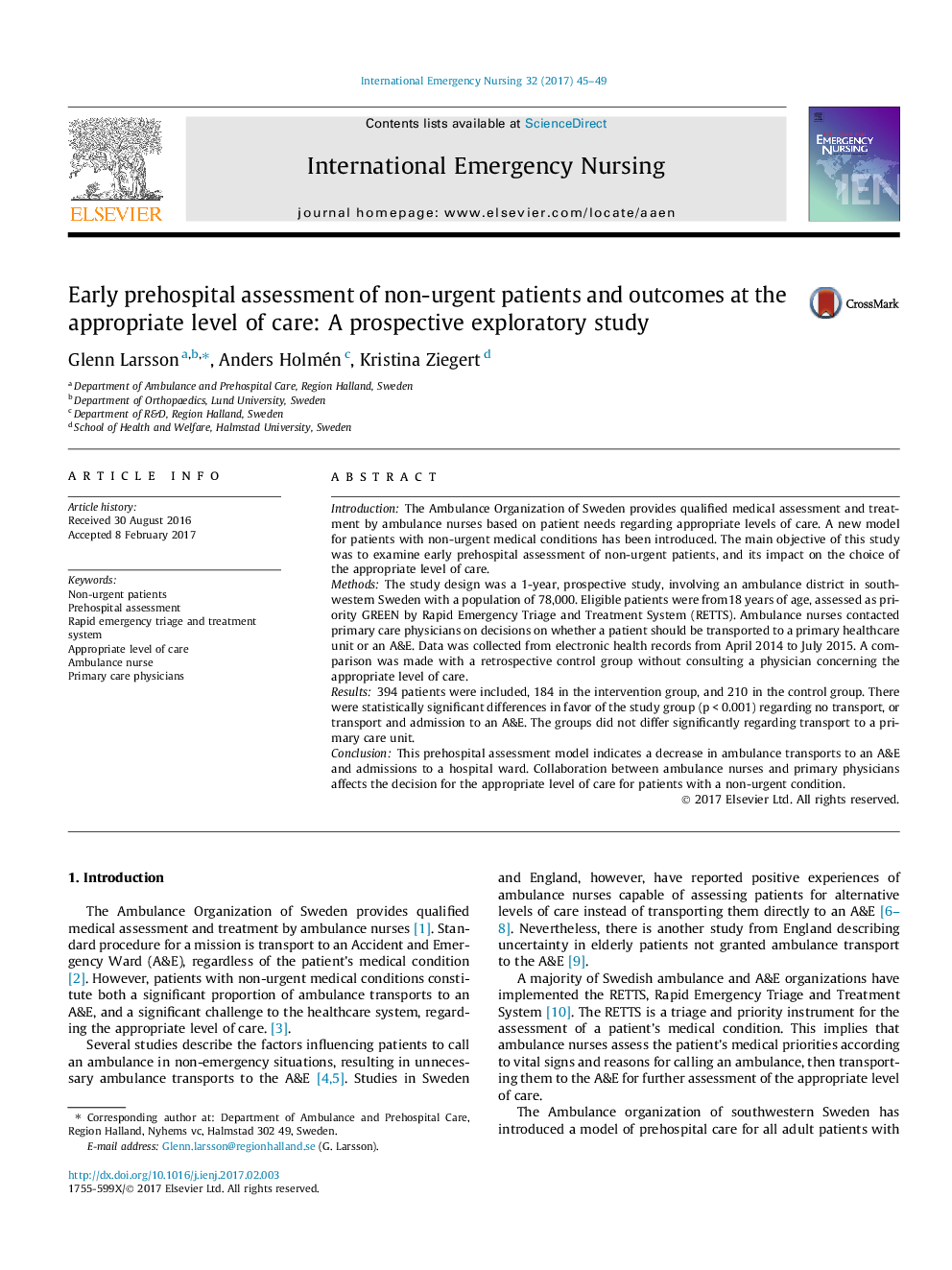| کد مقاله | کد نشریه | سال انتشار | مقاله انگلیسی | نسخه تمام متن |
|---|---|---|---|---|
| 5563053 | 1562833 | 2017 | 5 صفحه PDF | دانلود رایگان |
- Early prehospital assessment affects the appropriate level of care.
- Ambulance and primary care collaborates in a effective way.
- Patients with non-urgent medical conditions remain at home.
- Decrease in ambulance transports to accident and emergency department.
- Decrease in admission to hospital ward.
IntroductionThe Ambulance Organization of Sweden provides qualified medical assessment and treatment by ambulance nurses based on patient needs regarding appropriate levels of care. A new model for patients with non-urgent medical conditions has been introduced. The main objective of this study was to examine early prehospital assessment of non-urgent patients, and its impact on the choice of the appropriate level of care.MethodsThe study design was a 1-year, prospective study, involving an ambulance district in southwestern Sweden with a population of 78,000. Eligible patients were from18 years of age, assessed as priority GREEN by Rapid Emergency Triage and Treatment System (RETTS). Ambulance nurses contacted primary care physicians on decisions on whether a patient should be transported to a primary healthcare unit or an A&E. Data was collected from electronic health records from April 2014 to July 2015. A comparison was made with a retrospective control group without consulting a physician concerning the appropriate level of care.Results394 patients were included, 184 in the intervention group, and 210 in the control group. There were statistically significant differences in favor of the study group (p < 0.001) regarding no transport, or transport and admission to an A&E. The groups did not differ significantly regarding transport to a primary care unit.ConclusionThis prehospital assessment model indicates a decrease in ambulance transports to an A&E and admissions to a hospital ward. Collaboration between ambulance nurses and primary physicians affects the decision for the appropriate level of care for patients with a non-urgent condition.
Journal: International Emergency Nursing - Volume 32, May 2017, Pages 45-49
